Contents
Increasingly, summer residents prefer columnar apple trees. Usually they are planted not one at a time, but in small rows, which look very impressive during the flowering period or during the ripening of the fruits. Several of these apple trees with different ripening periods can fully provide a family with apples. So, the late variety “Moscow Necklace”, created by the breeder M.V. Kachalkin, gives large dessert-tasting apples that are perfectly stored for 2 months, are good fresh and suitable for processing.
Description and characteristics of the variety
The variety “Moscow Necklace” refers to semi-dwarf, the apple tree grows up to 2-3 meters high. Her leaves are dark green, somewhat elongated with pointed tips, the flowers are flat, round, white-pink. Almost all fruits are held on the trunk, and not on the side shoots. The variety is not self-fertile, representatives of other varieties should grow nearby so that the Moscow Necklace will please with a harvest. The first fruits may appear in the first year after planting. Apple trees bear fruit annually, the number of apples increases and reaches a peak at 4–6 years. By the 10th year, the yield begins to decline, and after the 15th it practically stops.
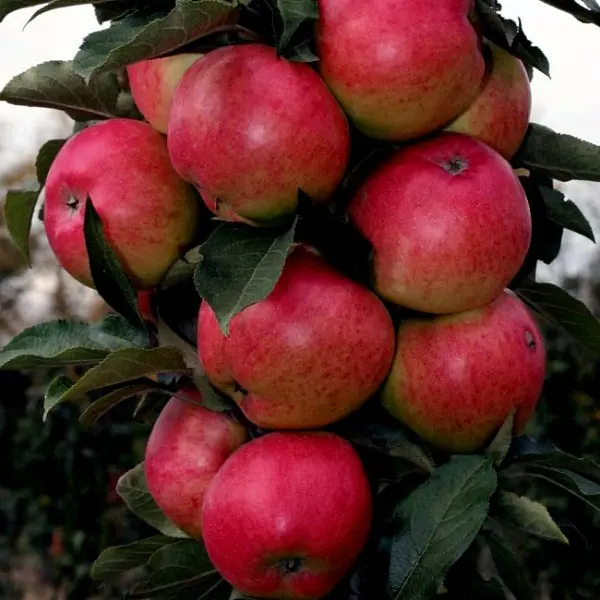
“Moscow Necklace” is considered a cold-resistant variety that is immune to scab and many other diseases of apple trees. All descriptions note not only the merits of the fruit, but also the ease of caring for the tree, good survival after transplantation.
Round apples with fine-grained light cream pulp have an average weight of 170 g, and grow more – 200 g. They have a very pleasant aroma, dessert taste – sweet with sourness. A thin, but rather dense skin has a green color, which from the end of summer begins to become covered with a dark red blush, and by the beginning of October, the period of full maturity, the apples become dark red. They are so juicy that when they fall to the ground they can crack.
For 2 months after harvest, apples are perfectly stored, a large amount of pectin allows you to make excellent jams and marmalades from them. Apples are good not only fresh, but also canned or dried.

Advantages and disadvantages
From one tree, you can collect 10 kg of large tasty fruits – this is a very good indicator for a columnar apple tree. The description of the variety also notes other advantages – frost resistance, resistance to one of the most common diseases – scab, elegant decorativeness of trees, excellent taste and commercial qualities of fruits. Indeed, slender, low trees take up little space, but their appearance greatly decorates the site. The absence of a lush crown practically eliminates the fight against numerous pests, makes it easier to care for the tree. Its pruning is minimized and does not require much physical effort.
The “Moscow Necklace” has many advantages, and the disadvantages include short fruiting and the high cost of seedlings. Like almost all columnar apple trees, this variety begins to bear fruit early, but after 10 years the number of apples is so reduced that the owners prefer to replace the tree.
Care instructions
Apple trees of the Moscow Necklace variety require minimal maintenance. They need to be watered, fed, carried out prevention against common diseases. Trees do not need to be sheltered from the cold, pruning consists in shortening thin shoots, and if you mulch the near-trunk circle, then you will have to water less often.
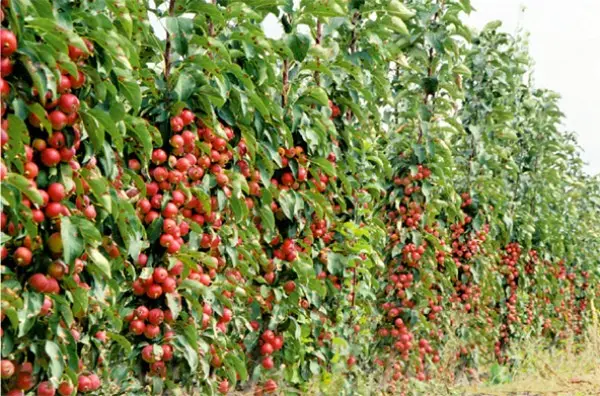
“Moscow Necklace” is in a hurry to bloom immediately after planting, and this will greatly weaken the tree, so it is better to plant it in the fall, in September or even October, if the weather permits.
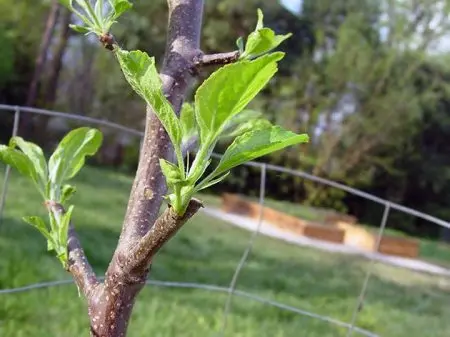
For planting, they usually buy a one-year-old seedling, it will take root easier than an adult tree. Before buying it must be carefully inspected. The roots should be alive, not overdried, there should be no damage on the stem, and all buds should be alive and clearly visible. If you need to transport the tree to the landing site, then it is advisable to moisten the roots.
Trees are planted at a distance of 40 cm from each other, and between the rows you need to leave more than a meter.
The soil should be non-acidic, nutritious, light, permeable to moisture and air. Loamy or sandy soils with good drainage are best suited. The planting hole is dug so that it is slightly wider and deeper than the root system. The excavated earth is mixed with compost and humus, the roots are lowered into the pit, they are carefully covered so as not to damage the roots and not to deepen the grafting site.
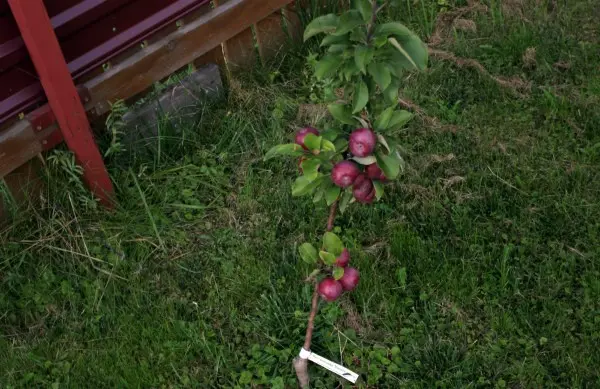
After the pit falls asleep, the tree is abundantly watered with water, preferably warm. In order for the seedling to take root well, the ground around it should not dry out for the first couple of months. In the future, the trees are watered 1 or 2 times a week, with an eye to the weather.
Columnar apple trees must receive good nutrition for fruiting. So, it is desirable to flavor the acidified soil with dolomite flour, and three top dressings are carried out during the season until mid-August. In the spring, you can add urea, mixing it with the ground during loosening. Trees respond well to watering with slurry highly diluted in water (900 g per 10 l). In summer, wood ash is scattered around the tree.
Despite all the frost resistance, the top of the apple tree can freeze (this is extremely rare, but it happens). In this case, it is pruned to the first strong shoot, which will become a continuation of the trunk, and the tree will still be straight and slender, because all shoots grow vertically upwards. Annual pruning is designed to shorten fruiting shoots, remove excess ones. The cut points, although they are not wide, are treated with garden pitch (or drying oil).
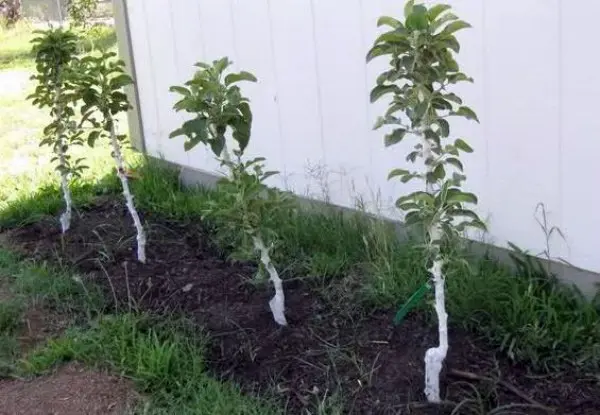
Diseases and pests
Trees of the Moscow Necklace variety are extremely rarely affected by scab, but other troubles traditional for apple trees can occur with them. This is moniliosis and spotting. They are attacked by aphids, codling moth and Schlechtendael mite. The female of the latter lays millions of eggs, and such a quantity, albeit a very small pest, can deprive young leaves of juice.
To scare away the codling moth, fragrant herbs can be sown between the trees. And against the rest of the pests (diseases too), they carry out treatments with acaricides, which are stopped 3 weeks before harvesting.
Many gardeners prefer not to use chemicals unless absolutely necessary. They regularly inspect the trees, especially since it is not difficult to do this with such a crown and such growth. They use an ash or tobacco solution for spraying, attract birds to the garden to fight insects.
With proper care, the trees of this wonderful variety very rarely cause trouble for their owners, more often they simply delight with their appearance and tasty fruits.
Video “Autumn transplantation of columnar apple trees”
From this video you will learn why the author decided to transplant apple trees of the Moscow Necklace variety, and how he did it.









